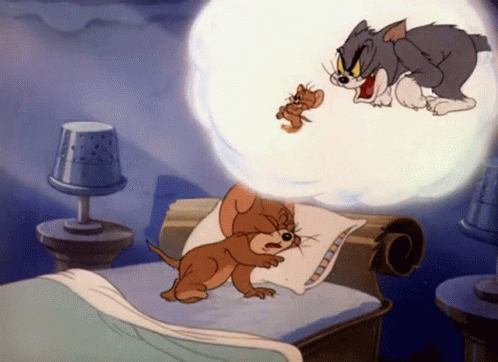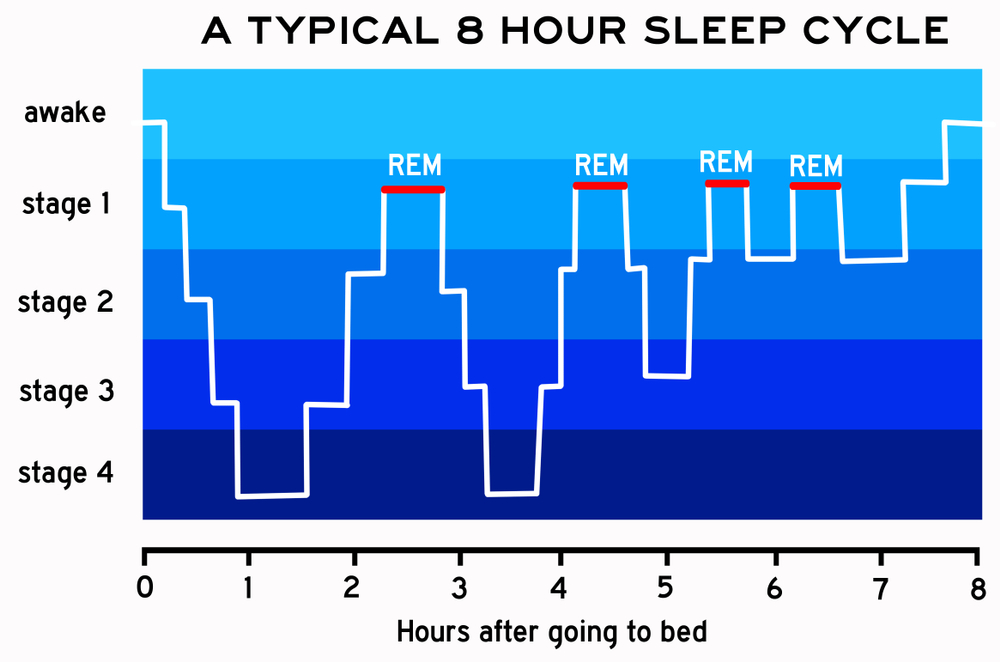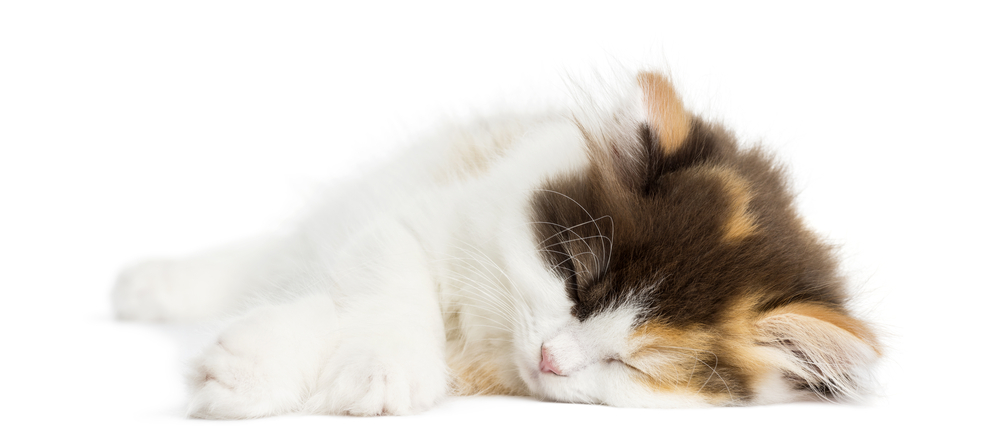A growing number of scientific studies indicate that nonhuman animals dream when they sleep. Furthermore, they are capable of having complex dreams, just like humans.
I remember the first time I saw my dog twitching, squeaking and moving her paws while she slept. As a new pet parent, I was a bit worried. Could my little pooch be dreaming or having a nightmare? My first instinct was to gently wake her up.
If you have a pet pal, chances are that you’ve wondered the same thing at some point. Do animals have similar experiences to us when we dream?
What if we could look into the minds of other creatures as they sleep?

Interest In Animals’ Mental Abilities Is Nothing New
For a long time, animals’ minds and behaviors have fascinated us. Remember Aesop’s fable of The Crow and The Pitcher? Scientists have observed corvids, the family of birds to which crows belong, showing the same behavior noted in that legendary story written nearly 2,500 years ago.
Aristotle even made an interesting remark on animals’ sleeping behavior. In the book The History of Animals, he suggested that, “[…] not only do men dream,” but also “dogs show their dreaming by barking in their sleep.”
Lucretius, a Roman poet, made an observation about his dog sleeping by a fire. He noticed that the dog’s eyes were rapidly moving while his legs twitched, as if he was chasing some kind of imaginary prey in a dream.
Dreams can often be vivid, rich and detailed, creating an entire world inside our minds. They can include recalling past events, and also imagining things that haven’t happened or aren’t even physically possible. This begs the question, are humans the only species with the vision and imagination required to have dreams?
No! We are not as unique as we once assumed.
Charles Darwin, the Father of Evolution, considered the mental powers of different species to be on a “continuum”, different by degree, not by kind. Darwin directly commented on the dreams of nonhuman animals in his work The Descent of Man (1871). He wrote, “As dogs, cats, horses, and probably all the higher animals, even birds have vivid dreams, and this is shewn by their movements and the sounds uttered, we must admit that they possess some power of imagination.”
From ancient anecdotes to modern scientific discoveries, we have learned how incredibly intelligent animals can be, ad how much more complex their mental processes are. They cleverly look for food and shelter, escape predators, and learn new things on a daily basis.
However, are animals intelligent enough to have dreams?
Possibly.
Also Read: Where Do Dreams Come From?
How Do We Measure Brain Activity During Sleep
Earlier, sleep was believed to be a passive activity, during which the brain just ‘shuts down’ and gets some rest. Since REM sleep was discovered in the early 1950s, and we came to know about the different stages of sleep, we now know that sleep is much more complicated than a nighttime “shut down”.

Similar to humans, many large animals have complex brains and neurons, the cells that help information travel through the brain and the nervous system by generating electrical signals. This electrical activity continues even as we sleep.
When we study sleep, we monitor changes in these electrical patterns of the brain. A machine called an EEG (electroencephalogram) can detect minute electrical signals of the brain. Our bodies, especially our muscles, remain somewhat active when we sleep. Physical movement patterns during sleep are recorded using EOG or eye movement sensing; Electromyography (EMG) can measure specific activity in the muscles.
From such measurements, we know that sleep is divided into roughly two halves: non-REM sleep and REM sleep. REM stands for Rapid Eye Movement. You start off in non-REM sleep, then eventually reach REM, and then cycle back to non-REM.
During REM, the brain is very active, our eyes move rapidly behind our closed lids, and our heart rate and breathing go up. This is also the phase in which dreaming is thought to take place.
From human sleep research, we’ve found that when people are woken up from REM sleep, they are more likely to recall and describe their dreams in vivid and vibrant detail.
Sadly, animals cannot speak, let alone chat about their dreams… so how can we know for sure?
Unlocking The Mysteries Of Animal Dreams
We cannot observe an animal’s dreams, but we can predict the sights, sounds or activities occurring in their sleeping minds. This is done by observing how their brain cells fire during “dreaming”, and comparing those patterns to the animal’s waking state.
From koalas who sleep 20 hours a day to dolphins who sleep while keeping half of their brains awake, the animal kingdom is incredibly diverse when it comes to sleep. Research suggests that almost all mammals (including primates like apes and chimpanzees), birds, and even some reptiles experience REM and NREM sleep states.
Scientists have found, by studying the brain patterns of zebra finches, that birds sing songs in their dreams. Rats, like humans, are reported to have dreams about the future, where they might be exploring new places.

When an animal exhibits clear signs of REM sleep, we can say with a reasonable amount of certainty that it might be dreaming.
Now, the question remains, do all animals dream?
Not likely. If there is a lack of neural activity in the brain, any form of mental imagery is unlikely to occur. Thus, for a long time, we believed that animals who do not show evidence for REM sleep, such as insects and aquatic creatures, like fish, cannot dream. At least, that’s what we used to think.
We now have an inkling that some fish or insects may actually dream. In 2022, researchers from Germany and the USA discovered that the jumping spider shows REM sleep patterns, and could potentially dream. They observed that jumping spiders moved their eyes just like dogs do when they sleep.
So, until we explore more, and develop better techniques to measure sleep, there’s no way of knowing what is truly happening inside the brain of a fish as it slumbers!
Also Read: How Do Fish Sleep Without Closing Their Eyes?
A Final Word
Humans are not the only species that experiences REM sleep. We have evidence that the brains of many animals follow similar patterns as ours do in deep sleep. Hence, the ability to dream (and inevitably, to have nightmares) is far from exclusive to humans.
So, when your furry friends whimper, paddle their paws, or twitch their eyes in deep slumber, don’t worry! They might just be chasing a butterfly, or lovingly dreaming of you!
How well do you understand the article above!

References (click to expand)
- No. 1 Reason Having Vivid Dreams Benefits Your Brain.
- Yamazaki, R., Toda, H., Libourel, P.-A., Hayashi, Y., Vogt, K. E., & Sakurai, T. (2020, December 14). Evolutionary Origin of Distinct NREM and REM Sleep. Frontiers in Psychology. Frontiers Media SA.
- Libourel, P.-A., Barrillot, B., Arthaud, S., Massot, B., Morel, A.-L., Beuf, O., … Luppi, P.-H. (2018, October 11). Partial homologies between sleep states in lizards, mammals, and birds suggest a complex evolution of sleep states in amniotes. (J. Born, Ed.), PLOS Biology. Public Library of Science (PLoS).
- Ólafsdóttir, H. F., Barry, C., Saleem, A. B., Hassabis, D., & Spiers, H. J. (2015, June 26). Hippocampal place cells construct reward related sequences through unexplored space. eLife. eLife Sciences Publications, Ltd.
- Siegel, J. M. (2008, April). Do all animals sleep?. Trends in Neurosciences. Elsevier BV.
- BK Young. (2017) Adult zebra finches rehearse highly variable song patterns ....
- Rößler, D. C., Kim, K., De Agrò, M., Jordan, A., Galizia, C. G., & Shamble, P. S. (2022, August 8). Regularly occurring bouts of retinal movements suggest an REM sleep–like state in jumping spiders. Proceedings of the National Academy of Sciences. Proceedings of the National Academy of Sciences.
